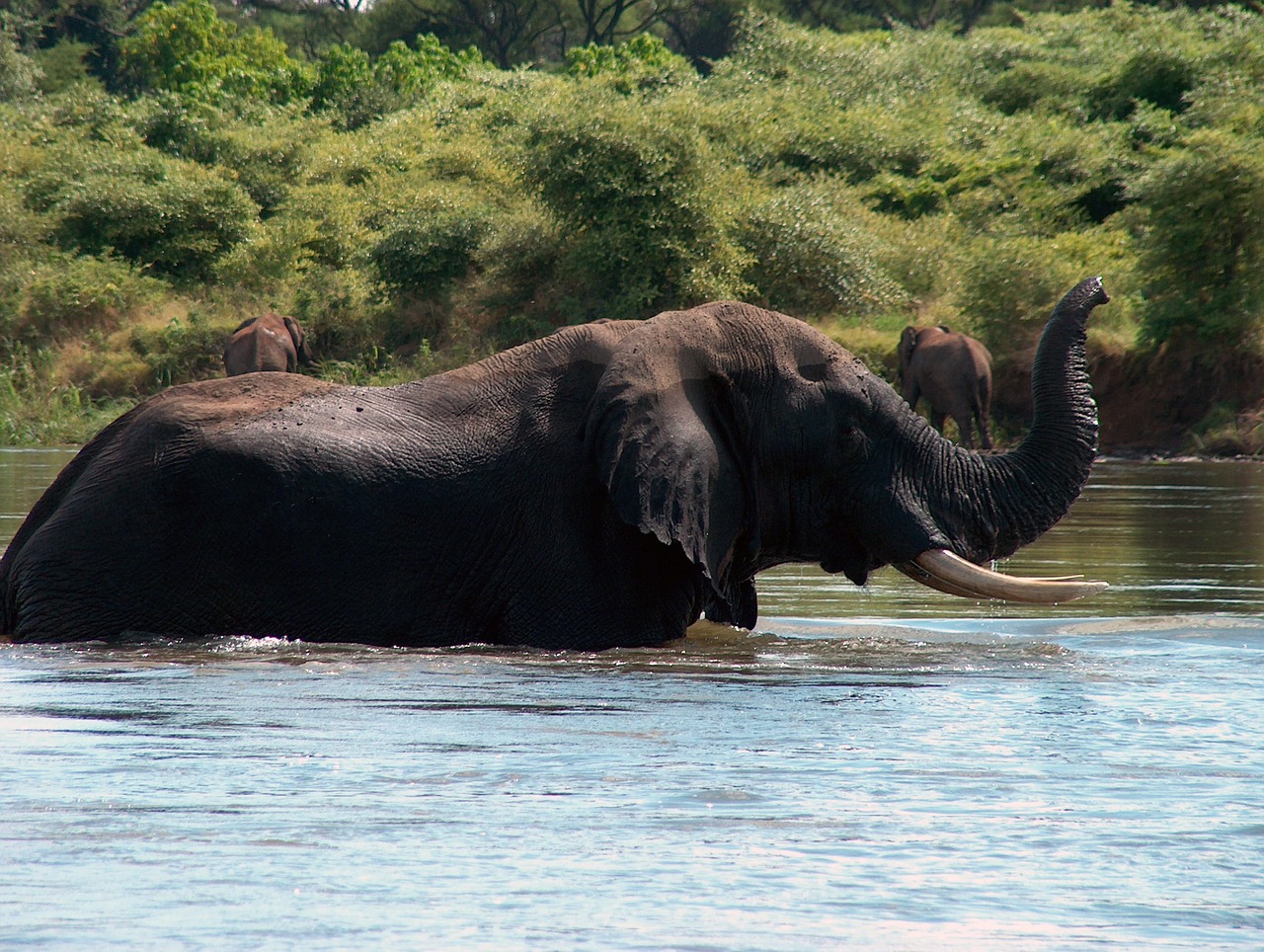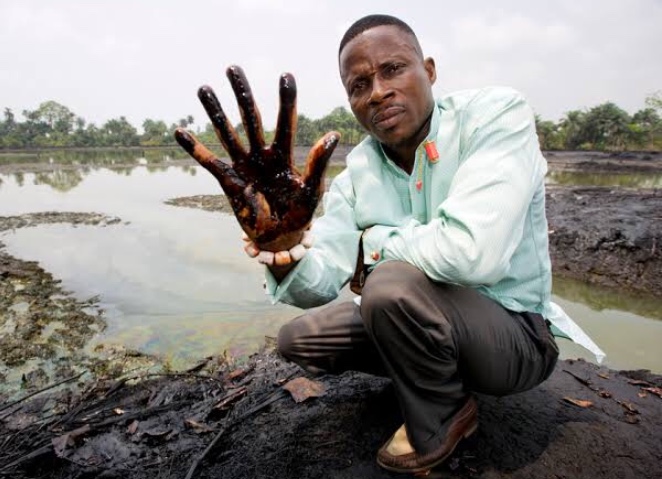
by DGR News Service | Sep 26, 2020 | Direct Action, The Solution: Resistance
Excerpted from the book Deep Green Resistance: Strategy to Save the Planet — Chapter 15: Our Best Hope by Lierre Keith.
2. Deep Green Resistance embraces the necessity of political struggle.
DGR is not a liberal movement. Oppression is not a mistake, and changing individual hearts and minds is not a viable strategy. Political struggle must happen on every level and in every arena if we’re to avert the worst ecological disasters and create a culture worth the name. By political struggle, I mean specifically institutional change, whether by reform or replacement or both. It’s institutions that shape those hearts and minds. A project of individual change would take lifetimes, if it worked at all. The individual has never been the target of any liberation movement for the simple reason that it’s not a feasible strategy, as our previous chapters have explained.
Fighting injustice is never easy. History tells us that the weight of power will come down on any potential resistance, a weight of violence and sadism designed to crush the courageous and anyone who might consider joining them. This is what abusive men do when women in their control fight back. It’s what slave owners do to slaves. It’s what imperial armies do to the colonized, and what the civilized do to the indigenous. The fact that there will be retaliation is no reason to give up before we begin. It is a reality to be recognized so that we can prepare for it.
The necessity of political struggle especially means confronting and contradicting those on the left who say that resistance is futile. Such people have no place in a movement for justice. For actionists who choose to work aboveground, this confrontation with detractors—and some of these detractors reject the idea of resistance of any kind—is one of the small, constant actions you can take. Defend the possibility of resistance, insist on a moral imperative of fighting for this planet, and argue for direct action against perpetrators. Despite what much of the left has now embraced, we are not all equally responsible. There are a few corporations that have turned the planet into a dead commodity for their private wealth, destroying human cultures along with it.
As we have said, their infrastructures—political, economic, physical—are, in fact, immensely vulnerable. Perhaps the gold standard of resistance against industrial civilization is MEND, the Movement for the Emancipation of the Niger Delta. The oil industry has earned literally hundreds of billions of dollars from taking Nigeria’s oil. The country currently takes in $3 billion a month from oil, which accounts for 40 percent of its GDP. The Niger Delta is the world’s largest wetland, but it could more readily be called a sludgeland now. The indigenous people used to be able to support themselves by fishing and farming. No more. They’re knee-deep in oil industry waste. The fish population has been “decimated” and the people are now sick and starving. The original resistance, MOSOP, was led by poet-activist Ken Saro-Wiwa. Theirs was a nonviolent campaign against Royal Dutch/Shell and the military regime. Saro-Wiwa and eight others were executed by the military government, despite international outcry and despite their nonviolence.
MEND is the second generation of the resistance. They conduct direct attacks against workers, bridges, office sites, storage facilities, rigs and pipelines, and support vessels. They have reduced Nigeria’s oil output by a dramatic one-third. In one single attack, they were able to stop 10 percent of the country’s production. And on December 22, 2010, MEND temporarily shut down three of the country’s four oil refineries by damaging pipelines to the facilities. Their main tactic is the use of speedboats in surprise attacks against simultaneous targets toward the goal of disrupting the entire system of production.
According to Nnamdi K. Obasi, West Africa senior analyst at the International Crisis Group, “MEND seems to be led by more enlightened and sophisticated men than most of the groups in the past.” They have university educations and have studied other militant movements. Their training in combat is so good that they have fought and won in skirmishes against both Shell’s private military and Nigeria’s elite fighting units. They’ve also won “broad sympathy among the Niger Delta community.” This sympathy has helped them maintain security and safety for their combatants as the local population has not turned them in. These are not armed thugs, but a true resistance. And they number just a few hundred.
Understand: a few hundred people, well-trained and organized, have reduced the oil output of Nigeria by one-third. MEND has said, “It must be clear that the Nigerian government cannot protect your workers or assets. Leave our land while you can or die in it.… Our aim is to totally destroy the capacity of the Nigerian government to export oil.” I can guarantee that 98 percent of the people who are reading this book have more resources individually than all of MEND put together when they started. Resistance is not just theoretically possible. It is happening now. The only question is, will we join them?
Featured image: Degradation of the Niger Delta via Wikimedia Commons
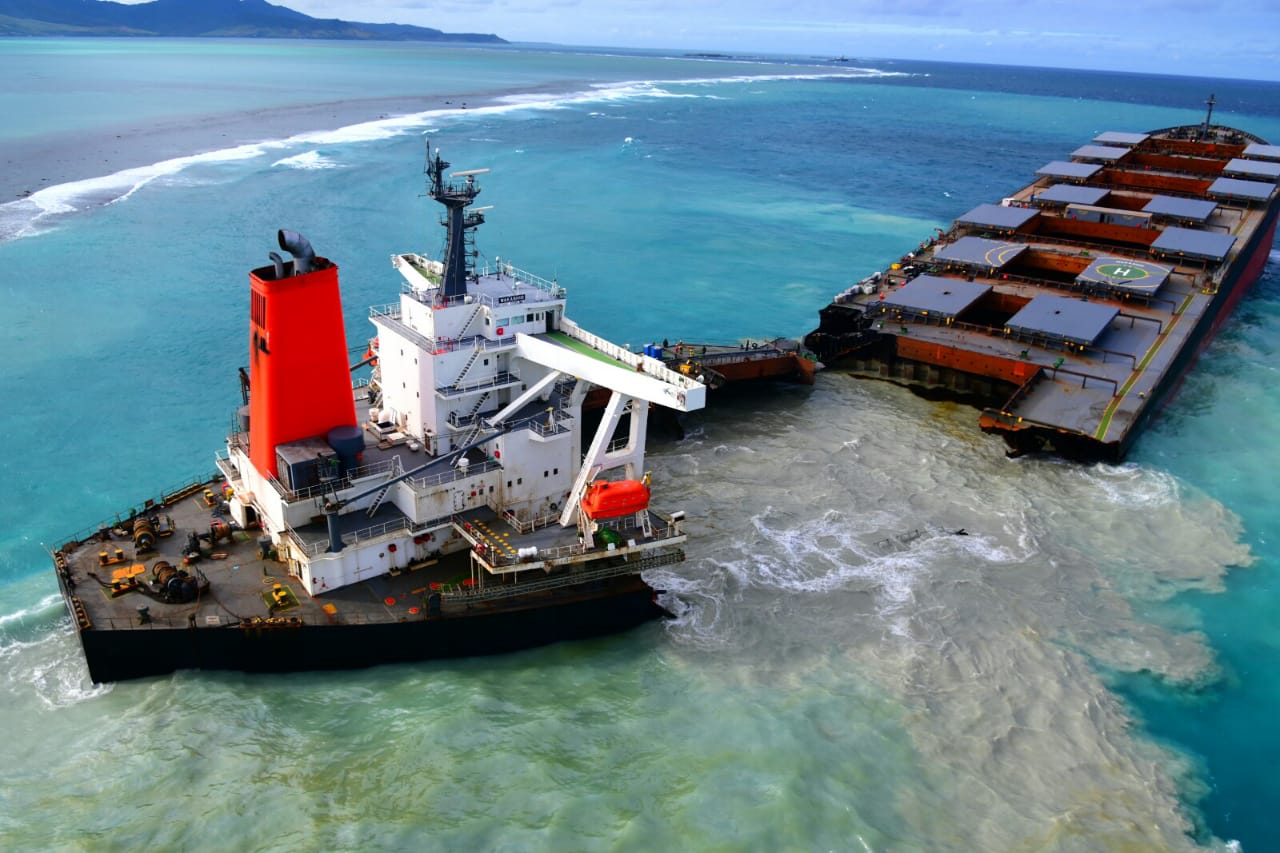
by DGR News Service | Sep 11, 2020 | Biodiversity & Habitat Destruction
This article was written by Malavika Vyawahare on 1 September 2020 and originally published on Mongabay.
- People gathered in the thousands in Mauritius’s capital, Port Louis, to protest the government’s response to a recent oil spill.
- The Japanese-owned freighter M.V. Wakashio crashed into the coral reef barrier off the island’s southeastern coast on July 25 and leaked about 1,000 tons of fuel oil into the sea near ecologically sensitive areas, before breaking in half a few weeks later.
- The stranding of at least 39 dolphins and whales near the site has sparked an outcry, though a link between the Wakashio shipwreck and the beachings has not yet been established.
- In a controversial move, the Mauritian government decided to sink the front half of the ship several kilometers away from the crash site in open waters, which some experts say could have impacted the dolphin and whale populations.
Thousands of people demonstrated in Mauritius on Aug. 29 over the government’s handling of a recent ship grounding that spilled 1,000 tons oil in the seas around the island nation. In what appears to be the latest toll in the incident, dolphins and whales have beached close to where the M.V. Wakashio freighter ran aground and broke up. Thirty-nine of the mammals have beached in the week to Aug. 28. Social media is awash with photos of the stranded animals, including mothers and calves.
At a press conference Sudheer Maudhoo, the Mauritian fisheries, marine resources and shipping minister, called the beachings a “sad coincidence.” Though a link between the deaths and oil contamination has yet to be established, disaffection has swelled in the aftermath of the spill, with protesters taking to the streets of the capital, Port Louis, and wielding an inflatable dolphin with “Inaction” written on it.
The Wakashio struck the coral reef barrier off the country’s southeastern coast on July 25; the damage to its fuel tankers led to a leak on Aug. 6. The fact that the ship lay lodged in the coral reef for more than 10 days before any decisive action by the government has become a sour point for Mauritians demanding answers from the authorities.
“The oil spill became like a culmination of growing frustration in the country. Since we have this new government, there were a series of issues and the Wakashio oil spill was the last straw,” said Mokshanand Sunil Dowarkasing, a former member of parliament who now works with Greenpeace in Mauritius. The vessel lay stranded in the vicinity of at least three sites of ecological significance: Blue Bay Marine Area; Pointe d’Esny, the largest remaining wetland in Mauritius; and the coral isle of Ile aux Aigrettes, which is a nature reserve. Facing mounting pressure from abroad and within the country, the government hastened efforts to pump out the oil that remained on board, even as a ship was at the brink of breaking apart. On Aug. 15, it broke into two, but by then most of the oil on board had been removed. The situation, however, has only grown murkier since.
This article was written by Malavika Vyawahare on 1 September 2020 and originally published on Mongabay. The original article can be accessed here:
https://news.mongabay.com/2020/09/mauritians-take-to-the-street-over-oil-spill-and-dolphin-and-whale-deaths/

by DGR News Service | Sep 4, 2020 | Biodiversity & Habitat Destruction
This piece was originally published in Earth Island Journal.
Zambia and Zimbabwe plan to move ahead with the $4 billion Batoka Gorge Dam that would displace villagers, wildlife, and a vibrant rafting industry along the Zambezi River.
by Rebecca Wilbear/Earth Island Journal
More than 50 men traverse the steep, rocky gorge. They balance as many as three kayaks on their back each, along with other equipment for rafting companies offering trips in the Batoka Gorge. Sweat glistens on their skin; they earn a dollar for each kayak. These porters come from the Indigenous Tokaleya villages situated along the edge of the gorge, on either side of the Zambia-Zimbabwe border. For the Tokaleya, the Zambezi River is an essential and sacred deity. It’s also a source of income. Tens of thousands of tourists raft the Zambezi’s rapids each year, drawn to the region’s rich ecosystem. Alongside the Tokeleya, birds, fish, and other wildlife make their home in the gorge.
Yet the section of the river that runs through Batoka Gorge is threatened. In June 2019, the General Electric Company of the United States and the Power Construction Corporation of China signed a deal with the Zambian and Zimbabwean governments to build and finance the Batoka Gorge Dam. The danger from a massive hydroelectric project, which was first proposed nearly 70 years ago, has become urgent.
Africa’s fourth largest river, the Zambezi flows through six countries. The Batoka Gorge section begins at the bottom of Victoria Falls, the largest waterfall in the world, also called Mosi-oa-Tunya, or “The Smoke That Thunders.” A few miles from Livingstone, Zambia, massive roaring waters spill from the sky and turn clear green as the river races through steep, dark canyon walls down the 50-mile gorge. The river then meanders for another 200 miles until it reaches Lake Kariba, the world’s largest reservoir by volume and an example of what Batoka Gorge could become.
I am a river guide, and in October 2019, I embarked on a four-day trip down Batoka Gorge as part of a two-week river guide training. Most of our guides, Melvin Ndelelwa, James Linyando, and Emmanuel Ngenda, were from the Tokaleya villages. Ndelelwa, who was a porter before becoming a river guide, pulled out a picture of a fish he caught at a hidden pool below the falls. It was almost as big as he is. His father was a porter his whole life. Becoming a raft guide in Zambia is hard work. The possibility of learning to guide energizes the porters.
Ndelelwa explains how his younger brother carves ebony root to make Nyami Nyami necklaces. The Nyami Nyami is a mythic river god, a serpent with the head of a fish. Legend has it, this god is angry that his sweetheart is trapped downstream behind the giant Kariba Dam. In 1956, a year into construction, the Nyami Nyami flooded the river, wreaking havoc on the construction site. The odds of another flood in 1957 were a thousand to one. Yet the river rose three meters higher than before, destroying the bridge, cofferdam, and parts of the main wall.
The guides told us that the Nyami Nyami would protect us when we wear the necklace that honors his sweetheart. On the river, I touched mine often, praying for safe passage. I am terrified of big water and scared of flipping. The Zambezi is a huge volume river with little exposed rock. It is extremely challenging, with long and powerful rapids, steep gradients, and big drops. Flipping is common. In high-pressure areas, you can’t even depend on your life jacket to keep your head above water.
On the river, I clung to the raft in awe and terror at the size of the waves. October is the dry season, when the water is low. In December, the rains raise the river and turn it muddy brown. Linyando navigated ahead in a safety kayak while Ngenda captained our raft. At one point between rapids, he pointed out the camouflaged crocodiles sun-bathing on rocks.
Halfway through the training, I was invited to guide the most challenging rapid, Gulliver’s Travels. I had already guided the rapid just prior called Devil’s Toilet Bowl twice, but my angle was off on this third attempt. The raft flipped backwards. I went deep underwater. It was dark and silent. A shaft of light appeared. Then more light. I surfaced. We turned the boat upright, but my confidence was shaken. I thought of backing out of Gulliver’s Travels, until the guides encouraged me. Back in the boat, I sent the raft through.
Throughout the trip, I felt that the guides protected me. Ndelelwa offered his sandal for the steep hike out after I lost my shoe. “This is my home,” he said. “It’s easy for me to walk barefoot.” Later, when I encountered a puff adder — a venomous snake with a bite that can be deadly — near my sleeping bag, Ngenda helped me move closer to the fire. “We sleep here,” he said. “The snakes don’t like fire.” It smolders all night smoking fish for breakfast, a staple food in villages along the gorge.
 IN 2015, THE WORLD BANK funded an Environmental and Social Impact Assessment (ESIA) that concluded that the dam is a “cheap” solution to the “electricity deficit” of Zambia and Zimbabwe. An airport and road have already been constructed. The reservoir of the 550-foot tall mega-dam will be 16 square miles and a half-mile from the put-in just below Victoria Falls, impacting a UNESCO World Heritage Site sacred to the Tokaleya peoples. The entire canyon will be drowned and destroyed.
IN 2015, THE WORLD BANK funded an Environmental and Social Impact Assessment (ESIA) that concluded that the dam is a “cheap” solution to the “electricity deficit” of Zambia and Zimbabwe. An airport and road have already been constructed. The reservoir of the 550-foot tall mega-dam will be 16 square miles and a half-mile from the put-in just below Victoria Falls, impacting a UNESCO World Heritage Site sacred to the Tokaleya peoples. The entire canyon will be drowned and destroyed.
If the dam build goes ahead, wildlife who live and breed in the gorge will be lost or displaced. The Cornish jack and bottlenose fish need fast-moving water to survive. The extremely rare Taita falcon is endemic to Batoka Gorge — it nests and breeds only here. The hooves of the small klipspringer antelope are designed to jump up and down the canyon. They will not be able to live on top. Leopards that live in the gorge will be forced to move to higher ground, becoming more vulnerable to hunting and poaching.
The ecological damage is layered with the human toll. Downstream from Batoka Gorge, the Kariba Dam, built in the late 1950s, displaced 57,000 Indigenous Gwembe Tonga and Kore Kore peoples, while stranding thousands of animals on islands. Kariba Dam has also demonstrated that imprisoning a river damages water quality, reduces the amount of water available for people and wildlife downstream, and harms the fertility of the land. Dams can also spread waterborne diseases such as malaria and schistosomiasis, while mega-dams may cause earthquakes and destructive floods.
Plus, the lifespan of a dam is 50 years. Less than 30 years after construction, Kariba Dam began falling apart, causing earthquakes and operating at less than 30 percent its proposed capacity. Falling water levels have made it increasingly less productive. The Chinese construction company regularly pours concrete into the wall to keep it from buckling. If it broke, it could cause a tsunami that would impact much of Mozambique and even Madagascar, potentially killing millions.
The Batoka Gorge project will cost around four billion dollars. It is supposed to take 10 to 13 years to complete, but some locals have noticed that high cost infrastructure projects often do not reach completion in Zambia. Increasing droughts due to climate change raise the question whether there will be enough water to operate a dam. Electricity generated is likely to be sold to foreign countries for income, while local people become poorer.
The dam will also displace river guides and most likely the villages along the gorge. Tourism is the third largest industry in Zambia. The governments say the dam’s construction will create jobs, but many of these jobs go to Chinese nationals hired by Chinese companies, and after construction ends, few will be needed to operate the dam. Some say the dam will create new tourism opportunities, like parasailing and wakeboarding, but crocodiles and hippos proliferate in flat water, making these activities risky.
China is rapidly expanding its global reach, including in Africa, through its Belt and Road Initiative, an ambitious infrastructure project extending to 60 countries and counting. The country has already financed two Zambian airports and the Itezhi Tezhi Dam, and owns a 60 percent share of Zambia national broadcasting service. As many less developed countries borrow big money from China for big infrastructure projects, they are incurring large debts. The debt incurred can be crushing to the food supplies, health services, and education of local people. As Daimone Siulapwa writes in the Zambian Observer, huge kickbacks are the root of the problem. They motivate Zambian leaders to negotiate deals with China. Millions of dollars go missing. Projects are not finished. The natural world and local people suffer.
Most river guides hope the dam never happens, but local rafting companies are afraid to speak out against it. They fear repercussions — from being shot to having their passport or business license revoked. International support is imperative if we want to see this river protected.
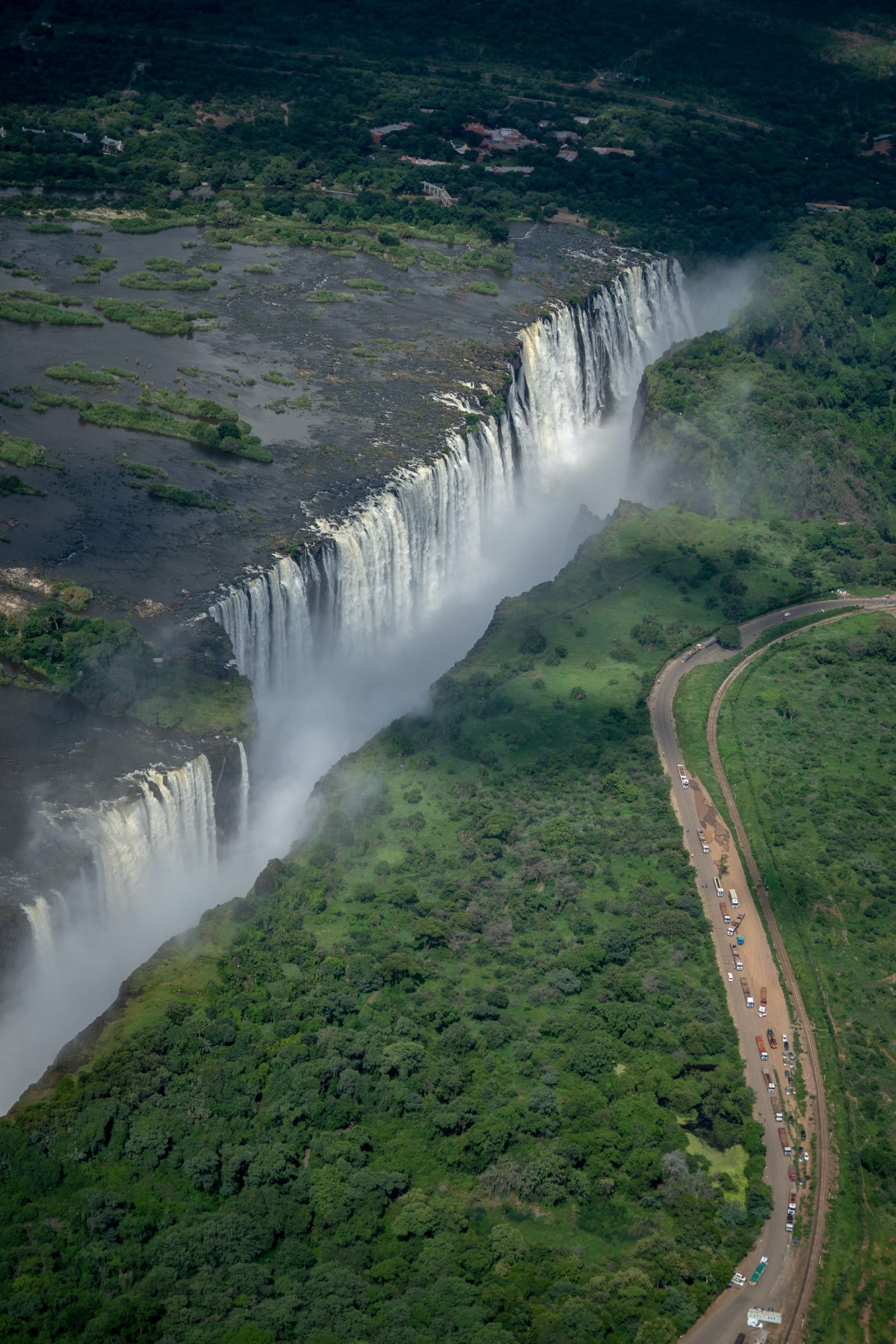
ALONG THE RIVER, villagers carve and sell wooden figurines: elephants, rhinos, lions, water buffalo. Ndelelwa always buys some, though he does not need them. I bought carvings too, and the vendor insisted on giving me a few extra.
Then Ndelelwa invited me to his village to eat nshima, a traditional thick maize porridge. We sat outside the round mud huts with grass roofs. Five children ran over to look at me with toothy smiles and a wide-eyed curiosity. As we ate from one bowl, I thanked them in their dialect, “Ndalumba.”
If the river is dammed, I wonder, what will happen to these people? How will they survive?
The last time I flipped the raft on the Zambezi, the waves were gentle. We held the perimeter rope of the capsized boat as we floated through a narrow section of canyon. Ngenda smiled as he turned the boat upright.
Dam projects are rarely stopped in industrial civilization. Save the Zambezi formed to oppose the construction of this dam. They seek help in challenging the ESIA. This dam will likely go ahead unless there is an unprecedented outcry of resistance. The Nyami Nyami protected us on the river. Perhaps his rage may once again knock down any walls placed in his path. I touch my necklace and pray for the river.
Help stop the Batoka Gorge Dam:
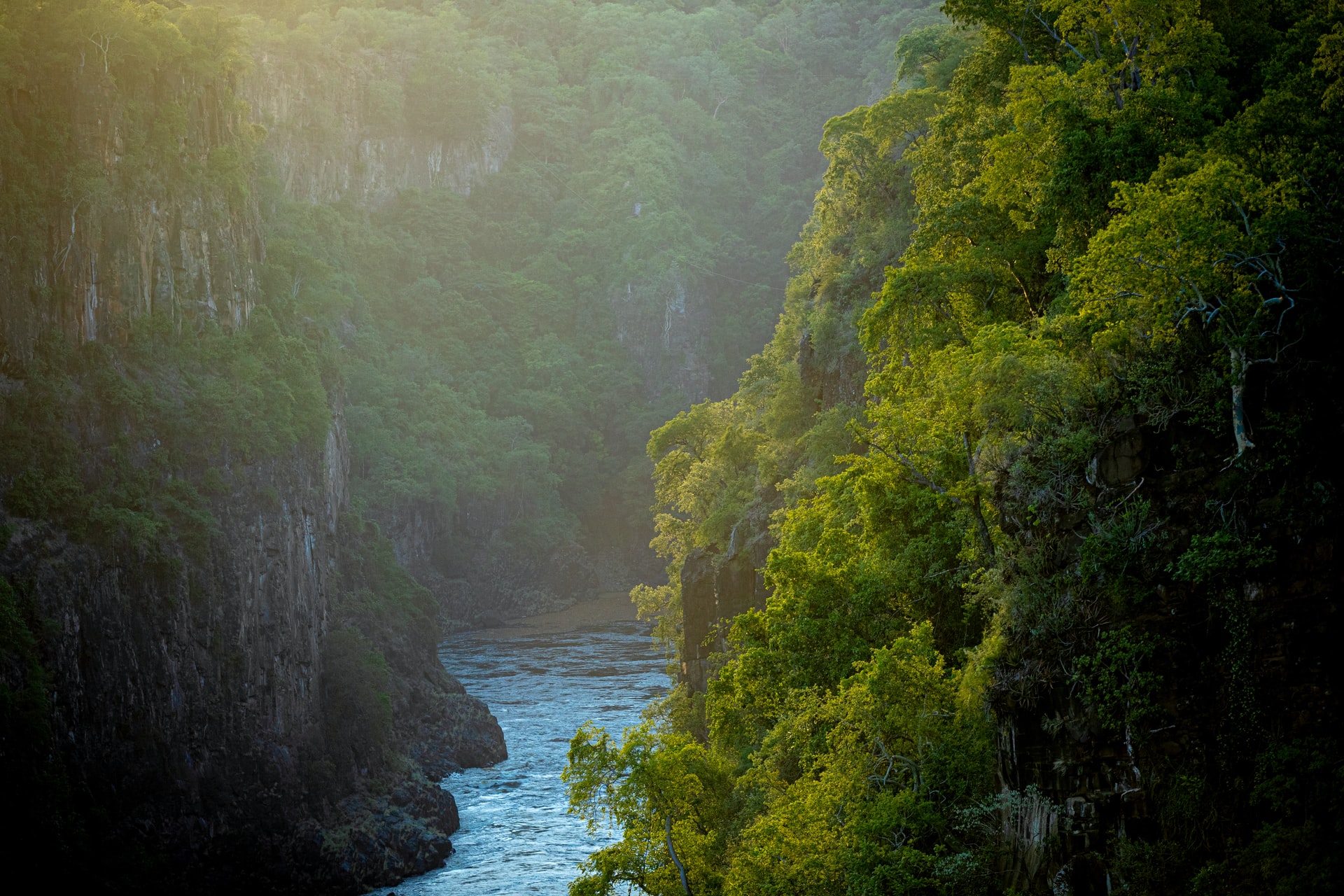 Rebecca Wildbear is a river and soul guide who helps people tune in to the mysteries that live within the Earth community, dreams, and their own wild Nature, so they may live a life of creative service. She has been a guide with Animas Valley Institute since 2006 and is the author of the forthcoming book Playing & Praying: Soul Stories to Inspire Personal & Planetary Transformation.
Rebecca Wildbear is a river and soul guide who helps people tune in to the mysteries that live within the Earth community, dreams, and their own wild Nature, so they may live a life of creative service. She has been a guide with Animas Valley Institute since 2006 and is the author of the forthcoming book Playing & Praying: Soul Stories to Inspire Personal & Planetary Transformation.
Featured image: the Batoka Gorge photograph by Prof. Davis, 1905. CC BY 4.0.



